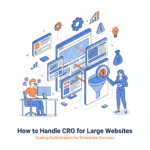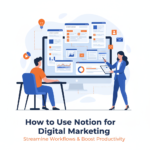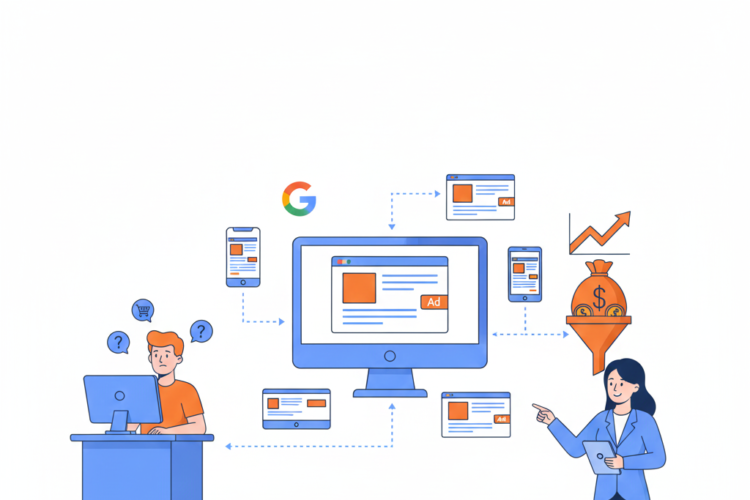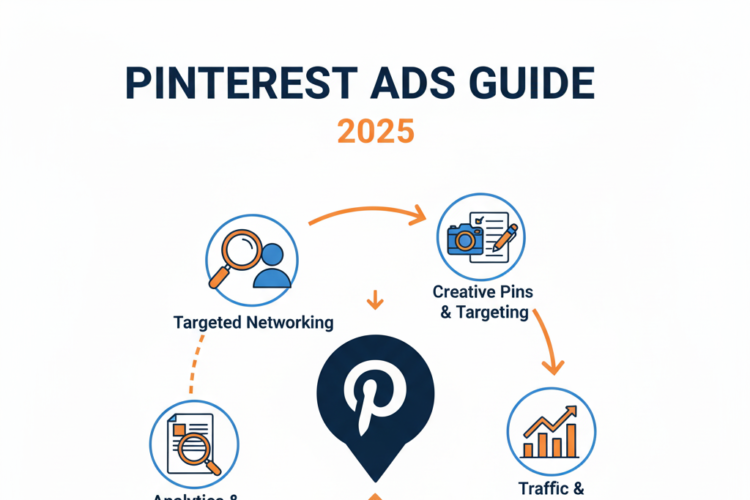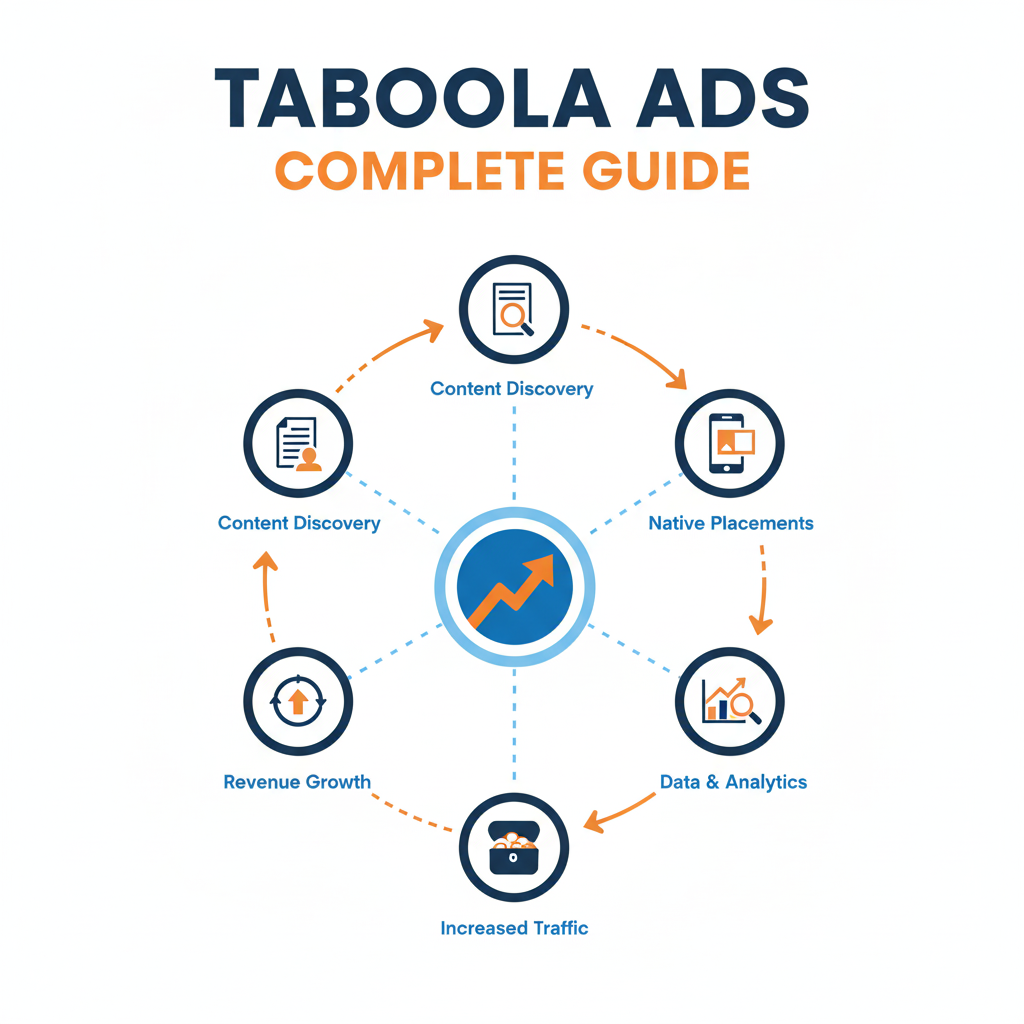
Introduction
In today’s digital landscape, audiences are increasingly resistant to traditional banner and display ads. They crave value-driven content that feels organic, not intrusive. That’s where native advertising comes in — and Taboola Ads is one of the most powerful platforms to deliver it.
Taboola allows brands to place content-based ads that blend naturally into editorial environments on top-tier publisher sites. Whether you’re driving eCommerce sales, generating leads, or boosting brand awareness, Taboola offers massive reach, flexible targeting, and advanced machine learning to help you scale profitably.
This guide covers everything you need to know about Taboola Ads — from setup and targeting to optimization, creatives, and advanced scaling strategies.
1. What Is Taboola?
Taboola is a native advertising and content discovery platform that displays sponsored content recommendations across a large network of publisher websites.
You’ve likely seen its widgets labeled “Around the Web” or “Recommended for You” under articles on major news and media websites. These placements are Taboola ads — designed to drive traffic by matching users’ interests and reading habits.
Key Highlights
- Founded: 2007
- Platform Type: Native advertising network
- Reach: Over 600 million daily active users
- Publisher Network: USA Today, NBC News, Business Insider, The Independent, and more
- Ad Types: Native display, video, carousel, SmartBid, retargeting
2. Why Use Taboola Ads
Marketers turn to Taboola for its blend of scale, affordability, and content-driven engagement. It helps advertisers reach users who are already in a discovery mindset — ready to learn, click, and convert.
Benefits of Taboola Advertising
| Advantage | Description |
|---|---|
| Massive Global Reach | Access to hundreds of premium publisher sites. |
| Lower CPCs | Generally cheaper than Google Display or Meta Ads. |
| Native Integration | Ads blend with site content, reducing ad fatigue. |
| High Intent Audiences | Users are already consuming related content. |
| AI Optimization | SmartBid automatically adjusts bids for better ROI. |
| Video Support | Offers both in-feed and outstream video placements. |
3. How Taboola Works
Taboola operates as a content recommendation engine. When a user reads an article on a publisher’s site, Taboola suggests related sponsored content — your ad — based on behavioral and contextual signals.
Here’s the workflow:
- Advertiser uploads creatives (headline, image, destination URL, targeting).
- Taboola displays the ad on relevant publisher sites.
- Users click the native ad and visit your landing page or article.
- Conversions are tracked via the Taboola Pixel.
- AI optimization adjusts placements and bids to improve performance.
4. Types of Taboola Ads
| Ad Type | Description | Use Case |
|---|---|---|
| Thumbnail + Headline Ads | Standard native format combining image and headline. | Blog promotion, affiliate offers, lead generation. |
| Motion Ads | Animated or short video creatives. | Product demos, brand awareness. |
| In-Feed Video Ads | Autoplay video units integrated within publisher feeds. | Brand storytelling, video funnels. |
| Carousel Ads | Swipeable image format. | Multi-product showcases, eCommerce. |
| SmartBid Campaigns | Automated bidding optimized for conversions. | Performance-focused advertisers. |
5. Setting Up Your Taboola Campaign
Step 1: Create an Account
Go to Taboola.com and register for an advertiser account. Complete verification by adding business and payment information.
Step 2: Install the Taboola Pixel
Before launching, install the Taboola Pixel to track:
- Conversions (purchases, leads, downloads)
- Retargeting audiences
- User behavior
Install it via Google Tag Manager or directly on your website.
Step 3: Choose a Campaign Objective
Taboola supports:
- Traffic campaigns – drive visitors to articles or blogs
- Conversion campaigns – optimize for leads or purchases
- Awareness campaigns – focus on views and reach
Step 4: Select Targeting
Taboola’s targeting is flexible and data-driven:
| Targeting Option | Description |
|---|---|
| Location Targeting | Choose countries, states, or cities. |
| Device Type | Desktop, mobile, or tablet. |
| Audience Segments | Interest and behavioral-based groups. |
| Custom Audiences | Retarget visitors using pixel data. |
| Lookalike Audiences | Find users similar to converters. |
| Contextual Targeting | Match ads to topics like finance, health, or travel. |
Step 5: Budget & Bidding
- Minimum daily budget: $10 (recommended $50+)
- Bid types:
- Manual CPC: You set the cost per click.
- SmartBid (Recommended): Taboola adjusts bids automatically for your target CPA.
Step 6: Upload Creatives
For each ad:
- Headline (60–100 characters)
- Image (600×500 or 1200×628 px)
- Destination URL
You can upload multiple combinations; Taboola will automatically test and optimize them.
Step 7: Launch
After review, your ads begin showing on Taboola’s publisher network within 24–48 hours.
6. Creative Best Practices
Taboola campaigns thrive on click-worthy creatives that capture attention and spark curiosity.
Headline Tips
✅ Ask questions: “Can This Simple Morning Routine Transform Your Day?”
✅ Use numbers: “7 Secrets Financial Experts Don’t Want You to Know”
✅ Build curiosity: “He Tried This Simple Trick — What Happened Next Will Surprise You”
✅ Match your niche: finance, fitness, lifestyle, health, or tech.
Image Tips
- Use expressive faces and emotions.
- Avoid text overlays.
- Test contrasting colors.
- Lifestyle or relatable visuals outperform stock images.
Landing Page Tips
- Match messaging with ad promise.
- Load under 3 seconds.
- Strong, clear CTA (“Get the Guide,” “Shop Now”).
- Optimize for mobile — most Taboola traffic is mobile.
7. Optimization Techniques
Once your campaign gathers 500–1000 clicks, start optimizing:
A. Block Low-Performing Sites
Review publisher reports and pause placements with poor CTR or conversion rates.
B. Rotate Creatives Regularly
Test new headlines and images weekly. Replace underperforming ones.
C. Adjust Bids
Raise bids for high-converting geographies or devices.
D. Use SmartBid
Allow Taboola’s AI to optimize for your target CPA based on performance data.
E. Retarget Visitors
Use pixel data to re-engage users who clicked but didn’t convert.
F. Gradual Scaling
Increase daily budgets by 10–20% every few days to maintain stability.
8. Advanced Strategies
1. Funnel Sequencing
Create multi-step campaigns:
- Step 1: Drive users to a value-based blog post.
- Step 2: Retarget readers with conversion-focused offers.
2. Conversion-Driven Optimization
Feed conversion data consistently (20+ per week) to improve SmartBid accuracy.
3. Dynamic Creative Testing
Upload multiple versions — Taboola will auto-optimize based on engagement.
4. UTM Tracking
Use UTM parameters in URLs and track behavior through Google Analytics or Voluum.
5. Audience Insights
Analyze user engagement by demographic and content category to refine targeting.
9. Taboola vs. Outbrain vs. MGID
| Feature | Taboola | Outbrain | MGID |
|---|---|---|---|
| Network Reach | 600M+ daily users | 500M+ users | 300M+ users |
| CPC Range | $0.05–$0.60 | $0.08–$0.80 | $0.03–$0.40 |
| Optimization | SmartBid (AI-driven) | Conversion Bid Strategy | Smart CPC |
| Best Use Case | eCommerce, lead gen | Editorial content | Affiliate offers |
| Min. Budget | $10/day | $20/day | $5/day |
10. Common Mistakes to Avoid
| ❌ Mistake | 🚫 Why It’s Harmful |
|---|---|
| Sending users to homepages | High bounce rate, low conversions. |
| Misleading ad copy | Temporary CTR gains, long-term account issues. |
| Ignoring tracking setup | Prevents optimization and audience building. |
| Scaling too fast | Can break SmartBid’s learning phase. |
| Neglecting creative refresh | CTR drops over time due to ad fatigue. |
11. Key Performance Metrics
| Metric | What It Measures |
|---|---|
| CTR (Click-Through Rate) | Ad appeal and engagement. |
| CPC (Cost Per Click) | Traffic cost efficiency. |
| CPA (Cost Per Acquisition) | Overall profitability. |
| CVR (Conversion Rate) | Landing page effectiveness. |
| ROAS (Return on Ad Spend) | Campaign-level profitability. |
12. The Future of Native Advertising
Native ads are evolving to become smarter, more contextual, and privacy-friendly. As cookies fade out, Taboola’s strength lies in:
- First-party data integration
- Contextual content targeting
- Predictive AI for audience modeling
- Seamless eCommerce and video ad experiences
Native advertising’s biggest advantage remains — it doesn’t interrupt. It engages.
Conclusion
Taboola Ads offer one of the most cost-effective and scalable ways to reach audiences beyond traditional ad platforms. Success depends on testing, data tracking, and consistent creative iteration.
When used strategically, Taboola becomes more than an ad platform — it’s a content distribution engine that builds awareness, trust, and conversions simultaneously.
Focus on authentic storytelling, audience alignment, and optimization — and let Taboola’s AI amplify your reach.
